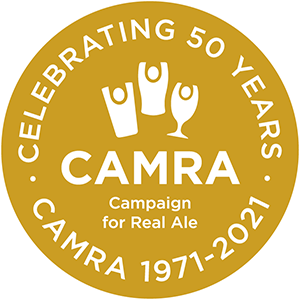Black Horse
Lancashire - Preston
Three star - A pub interior of outstanding national historic importance
Listed Status: II
166 FriargatePreston
PR1 2EJ
Tel: (01772) 204855
Email: enquiries@blackhorse-preston.co.uk
Website https://www.robinsonsbrewery.com/pubs/black-horse-preston/
Facebook https://www.facebook.com/blackhorsepreston
Real Ale: Yes
Real Cider: Yes
Nearby Station: Preston (Lancs)
Station Distance: 600m
Public Transport: Near Railway Station (Preston (Lancs)) and Bus Stop
Bus: Yes
View on: Whatpub
The Friargate façade has a central elliptical-headed doorway with moulded stone surround and very large brackets featuring stone carvings of male and female figures carrying a balustraded balcony above. The Black Horse Hotel mosaic floor in the Friargate entrance and ‘Black Horse’ deep etched glass in the inner door is a taste of what’s inside. A mosaic floored passage leading to the heart of the pub centred round the servery. There are two small smoke rooms, one each side of the corridor, and to the right is the public bar originally accessed via the Orchard Street entrance.
The public bar has a wonderful ceramic semi-circular bar counter, possibly by Pilkingtons, in graceful cream and light green with bulging pilasters, decorative brackets and a wooden top and is one of only 14 ceramic bar counters left in the country. Other Heritage Pubs with a ceramic bar counter are the Burlingtons bar at the Town House, St Annes on Sea, Lancashire; Mountain Daisy, Sunderland, Tyne & Wear; Red Lion, Erdington, Birmingham; Polar Bear, Hull, East Yorkshire; White Hart Hotel, Hull, East Yorkshire; Garden Gate, Hunslet, Leeds, West Yorkshire; Golden Cross, Cardiff, Glamorgan, Wales; Crown, Belfast, Northern Ireland Other examples can be found at Horse & Jockey, Wednesbury, West Midlands where a small part on the left has been lost; Castle, Manchester City Centre; Hark to Towler, Tottington, Greater Manchester where the bar has been moved; Waterloo Hotel & Bistro, Newport, Gwent, Wales which has no public bar facility; and there is one in China Red which was the Coach & Horses, Dunswell, East Yorks and now operates as a Chinese Restaurant.
Within the servery is a modest U-shaped bar back fitting which was installed in c.1995 and has modern additions such as fridges. The walls of the public bar have a tiled dado of light brown plain tiles, red and light blue decorative tiled panels and a brown, cream and blue ceramic row above. There is a splendid ceramic fireplace in mainly brown with Fleur de Lys symbols in relief and a mirror in a wood surround above. This small room has a mosaic floor and good segmented plaster ceiling. There is a vestibule entrance from Orchard Street with mosaic floor, a tiled dado as elsewhere, and the inner door & side panels have colourful stained and leaded glass panels.
In c1995 an archway was cut between the corridor and the public bar accessing it to the rest of the pub. There is a further door in Lothian Street, off the right hand side Orchard Street which has 'Hotel Entrance' in the top panel. This was also used by customers of the public bar to originally access the toilets at the rear by going outside the Orchard Street door and back into the pub by the Lothian Street / Hotel Entrance door.
 Pub Heritage
Pub Heritage 